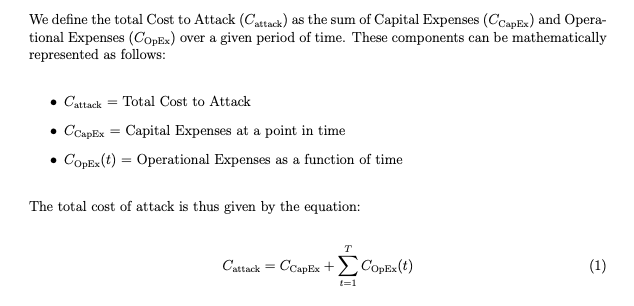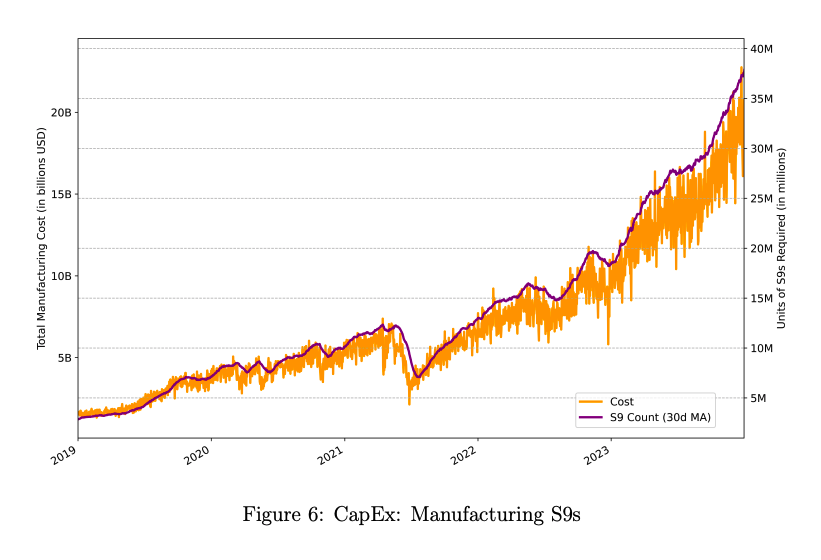Coin Metrics suggest that nation-states can no longer feasibly destroy BTC and ETH networks through 51% attacks due to high expenses.
According to the most recent findings from the cryptocurrency intelligence company Coin Metrics, it is no longer feasible for nation-states to achieve their goal of destroying the Bitcoin and Ethereum networks through 51% attacks.
This is due to the exorbitant expenses involved in doing so are so exorbitant. According to the definition of a 51% attack, a malicious actor is considered to have more than 51% of the mining hash rate in a proof-of-work system (like Bitcoin) or 51% of the staked cryptocurrency in a proof-of-stake network (like Ethereum).
Theoretically, attackers could use this authority to change the blockchain in various ways such as stopping new transactions from receiving confirmations or reversing transactions to double-spend tokens.
Based on the widespread belief that it would damage the network by eroding confidence, attackers may theoretically use this capacity to alter the blockchain in various ways such as preventing new transactions from receiving confirmations.
Researchers at Coin Metrics, Lucas Nuzzi, Kyle Water and Matias Andrade contended in a paper published on February 15 that there are no longer viable options for a nation-state attacker to run an attack consistently.
This is because the current cost of capital and operational expenses to achieve 51% control is too high. To precisely measure the amount of money that would be required to launch an assault on a blockchain network, the authors made use of a statistic known as “Total Cost to Attack” (TCA).

Through the use of TCA, Coin Metrics research came to the conclusion that there are no profitable avenues through which to attack either the Bitcoin or Ethereum networks.
This eliminates the financial incentive for a malicious attacker to carry out such an attack. Coin Metrics paper stated that “in none of the hypothesized attacks presented here [would the attacker] be able to profit by attacking Bitcoin or Ethereum,” which was how the report was written.
“Consider that even in the most profitable double spend scenario presented, where the attacker could potentially make $1B after spending $40B, that would account for a 2.5% rate of return.”
After analyzing secondary market data and real-time hash rate output, the paper concluded that to launch a 51% attack on Bitcoin, an individual would need to acquire an astounding 7 million ASIC mining rigs which would take approximately 20 billion dollars.
After pointing out that there are not enough ASIC rigs available on the market, the research moved on to the next potential attack vector which is something that a very “relentless” attacker may use to their advantage.
If we assume that a nation-state attacker is “resourceful enough” to produce their mining rigs, with the Bitmain AntMiner S9 being the only “plausible” device that could be reverse-engineered for production, then the total cost would still be more than 20 billion dollars.

Furthermore, the investigation discovered concerns about a potential staking attack on Ethereum from Lido validators that could reach as high as 34% may be unfounded.
A significant number of people have the opinion that the ongoing expansion of liquid staking derivative (LSD) providers namely LidoDAO, poses a significant risk to the Ethereum infrastructure.
On the other hand, the report concluded that using LSDs to launch an attack against the Ethereum blockchain would not only be exceedingly time-consuming but also extremely expensive.
“That would cost over 34B USD. The attacker would have to manage over 200 nodes and spend 1M USD on AWS alone.”
According to Nuzzi, “We estimate that an attack on Ethereum would take six months due to the churn limit, which prevents stakes from being deployed all at once.” Nic Carter, a partner at Castle Island Ventures lauded the research conducted by Coin Metric as being “utterly and completely significant.”

Carter observed that earlier evaluations had been primarily ambiguous or theory-driven and that this report was the first time that a rigorous and empirical investigation had been carried out.
There has never been a time when this kind of analysis was even conceivable. This is a really major contribution to the body of literature, and it is one that I have been anticipating for a considerable amount of time,” wrote Carter.
